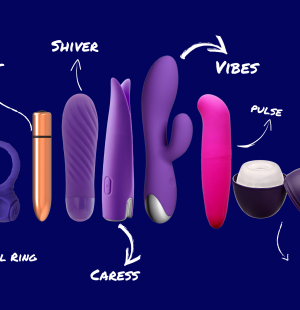Five Things You Might Not Know About Gender Identity

We know our brain is responsible for thoughts (duh), feelings and actions, but does it control gender?
Science says: the lines are fuzzy
“We now know that nature doesn’t draw the line for us between male and female; we actually draw that line on nature,” says anatomy historian and activist Alice Dreger in her TED talk – a great jumping-off point for modern thinking around gender. Her work includes advocating for intersex people, who don’t have standard male or female body types. As Dreger puts it, our systems – social, political, and even which door we use for the bathroom – have been based on the idea that a certain anatomy comes with a certain identity. However, science is showing that two categories no longer cut it.
Gender is in the brain
We know our brain is responsible for thoughts (duh), feelings and actions, but does it control gender? A study by researchers at the Medical University of Vienna indicates that gender identity is reflected in the cross-links between brain regions. By inspecting white brain matter under MRI, scientists found clear differences in the brain connections of transgender people when compared to male and female control subjects. “While biological gender is usually manifested in the physical appearance, the individual gender identity is not immediately discernible and primarily established in the psyche of a human being,” they wrote. In short: your gender identity is literally in your mind.
Kids know who they are
There’s a common assumption that kids who haven’t gone through puberty can’t ‘truly’ identify as transgender. But, according to a study published in Psychological Science, they know themselves better than we think. A team at the University of Washington surveyed over 30 trans children who were living as their identified gender, as well as cisgender (when your parts match your identity) kids, and compared the findings. “Our results support the notion that transgender children are not confused, delayed, showing gender-atypical responding, pretending or oppositional,” the researchers wrote. “They instead show responses entirely typical and expected for children with their gender identity.”
Gender is going public
Research aside, more high-profile people are publicly owning their identity as trans and non-binary (i.e., not identifying as exclusively masculine or feminine). This is shifting the way we think about gender. People like musician JD Samson, actress Laverne Cox, decathlete Caitlyn Jenner, comedian Eddie Izzard, writer Tyler Ford and model Isis King all identify as either trans or non-binary. The ‘Wachowski Brothers’ – as credited when they directed The Matrix – have both publicly transitioned from Laurence and Andrew to Lana and Lilly, and shows such as Netflix’s Orange Is the New Black and Amazon’s Transparent are shining a spotlight on storylines about trans and non-binary people.
Language is diversifying
Our world’s so binary that even language is gendered. In most tongues, gendered pronouns such as ‘she’ and ‘he’ pose problems for people who don’t identify as either. But language is developing to reflect and respect people’s choices. In English, the pronouns ze/hir/hirs (to replace he/she, his/hers, their/theirs) are growing in use. In Sweden, the national dictionary now includes ‘hen’, to be used in place of ‘han’ (she) and ‘hon’ (he). The honorific ‘Mx’ is now in the Oxford English Dictionary. And people of Latin descent, referred to as ‘Latino’ or ‘Latina’, have a new pronoun: ‘Latinx’ (pronounced la-teen-ex) is a gender-neutral alternative that makes space for people to express themselves as they are.








